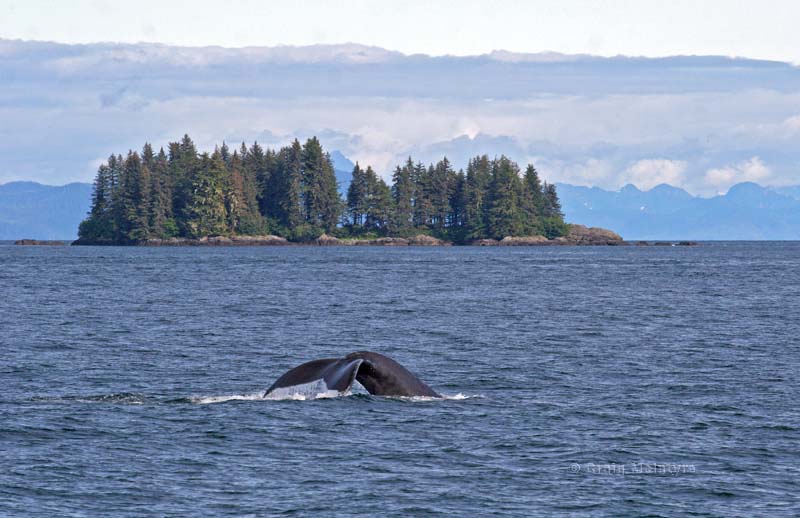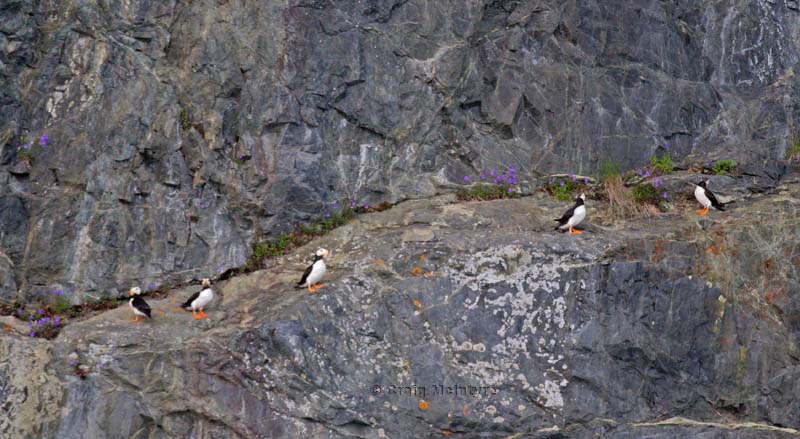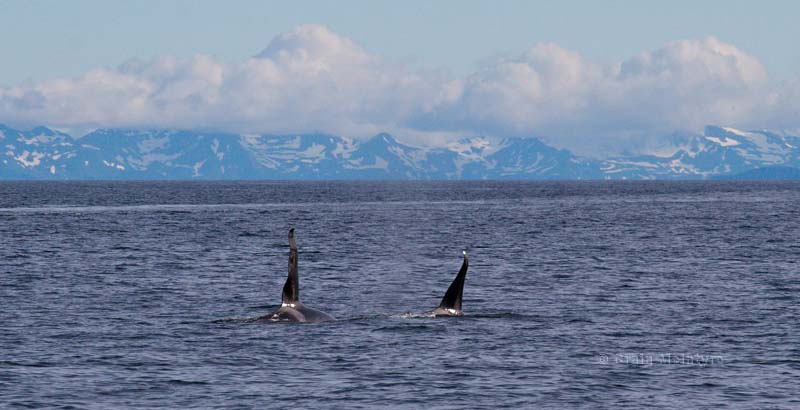Wednesday 26th July, 2006
Yet more images from a day cruise around northern Prince William Sound.

Above: Columbia Glacier, the world's fastest glacier. It is moves forward at 34m per day (lighting for a glacier!) however it is calving more ice into the bay faster than it is moving, causing it to recede. The face of the glacier is 5km wide and 90m tall, yet there is still 500m of ice under the surface carving out a fjord! It stretches back an incredible 54km and since 1980 it has retreated 14km. As it retreats it will continue to carve out an even larger deepwater fjord.
Below: Meares Glacier, one of the few advancing (but thinning) glaciers left. Notice that there are trees right up to the edge of the advancing glacier, but none that are near the retreating Columbia Glacier above. The face of this glacier is about 60m high and about 1km wide. It is from this glacier that I captured the animation of it calving ice on the previous page.


Above & Below: After leaving Meares Glacier and thinking about how lucky we were to see the wildlife and glacial calving two humpback whales were spotted.

Above & Below: Humpbacks can stay underwater for 8 minutes at a time, but typically surface every 4 or 5 minutes. They stayed on the surface for about a minute before diving down again and showing us their beautiful tail.


Above: After leaving the humpback whales we spotted some splashes off in the distance. Some Dall's Porpoises swam towards the boat and playfully danced across the bow of the boat, keeping up with us and jumping in and out of the water. These creatures only live in the colder deep waters of the northern Pacific.
Below: Horned Puffins are really beautiful, colourful birds with their vibrant colours and oversize beak. They live on the open sea except when breeding and can dive up to 80 feet to catch fish. Black feathers on their back help hide them from flying predators while white feathers on their belly camouflage them from fish below. A black line runs from their eyes to the nape of their neck and their large triangular beaks are bright yellow with a red tip. On top of that, their legs and feet are bright orange. Here is a good close up picture of these majestic animals.


Above: After being satisfied that we had seen some whales (humpbacks) there was yet one more surprise - Killer Whales! Actually that term is a bit of a misnomer since they are a member of the dolphin family. A pair of Orcas where slowly making their way across Prince William Sound.
Below: Since orcas (or whales in general) are not always seen on cruises, the Alaska Marine Highway Ferry detoured for a closer look.


Above: The dorsal fin on the orcas were very large and curiously bent.